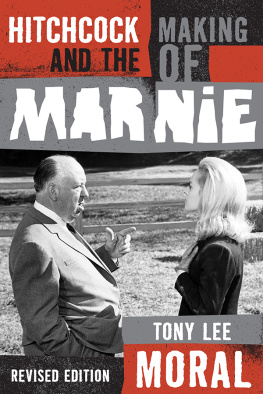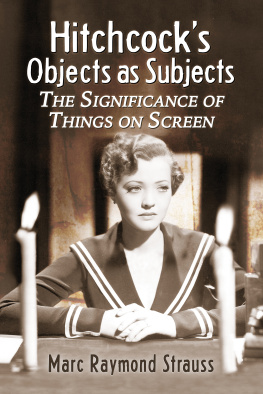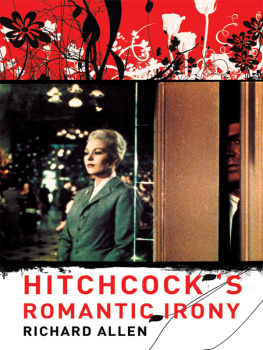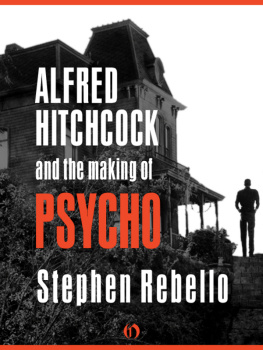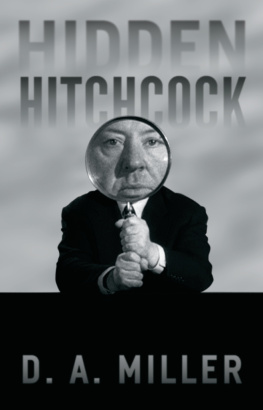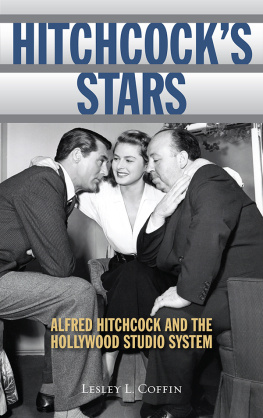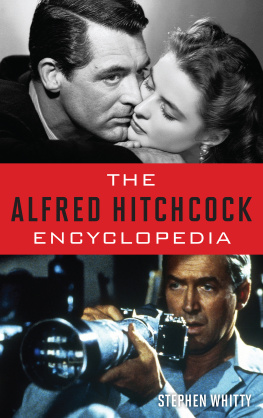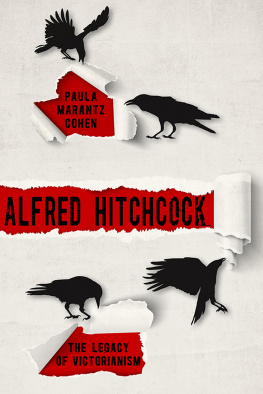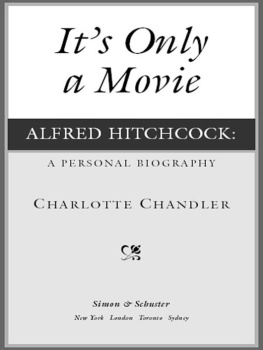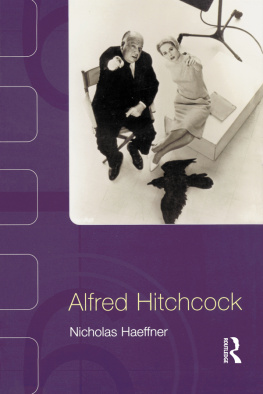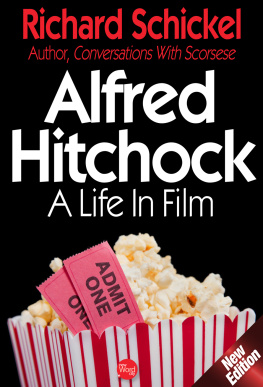About the Authors
J im McDevitt , a banker and freelance writer, has written numerous articles and stories for a variety of paper and Internet publications, including the Times newspapers of New Jersey. He spent time as a newspaper sports editor, and he has contributed dozens of film reviews to pop culture website dvdinmypants.com. His areas of special interest are films of the 1930s, 1940s, and 1950s, along with a soft spot for teen comedies of the 1980s. Before he began writing about cinema, he viewed it, spending time as a projectionist. Visit jimmcdevitt.com, where he muses on such topics as baseball, movies, pop culture, and, occasionally, giraffes.
E ric San Juan is an editor for a family of seven weekly newspapers in New Jersey. He has written hundreds of pieces on a wealth of topics, ranging from history to politics to sports to science and the environment. His writings on film, entertainment, and pop culture have been featured on numerous websites, where he has contributed interviews with stars like Dave Foley ( NewsRadio, Kids in the Hall ), film reviews, essays on the work of Alfred Hitchcock and graphic novelist Alan Moore, irreverent commentary on the world of entertainment, and more. His work has appeared in magazines such as the legendary Weird Tales and music and technology hybrid Oscillator 3 . He is the author of Stuff Every Husband Should Know and a contributing author on Geek Wisdom: The Sacred Teachings of Nerd Culture. Find out more at ericsanjuan.com.
Acknowledgments
W e would be remiss if we did not offer a few brief thanks. First, we are in debt to Tim Granda and the readership of dvdinmypants.com, which played a vital role in this projects first steps. We worked out kinks in our embryonic text in front of a live audience, soliciting feedback from the sites community of film enthusiasts. Their response told us we were on the right track, and the staff s generosity in allowing us to utilize the sites resources and readership helped us hone our craft. They deserve our thanks. But those early drafts would never have been molded into the book you hold in your hands without the input of our editor at Scarecrow Press, Stephen Ryan, whose suggestions, direction, and advice helped transform this book at every stage of its development, always for the better. This project would have been nothing more than a grand idea without his careful guidance and support. Our gratitude also extends to Linda Siemon, whose detailed reading and generous commentary helped us polish our first draft, and Dave Traupman, Natalie-Erin San Juan, and Eric Ceresa, whose input was of great assistance in fine-tuning the finished product. A thank you is also warranted to our family and friends, who weathered a year of nonstop Hitchcock talk and nonstop Hitchcock films right alongside us. If ever they grew weary of how this project consumed our livesand consume our lives it didwe never heard a word of complaint. Thank you.
Finally, and most importantly, our thanks go out to Alfred Hitchcock himself. After all, this project would not have been possible without his immense talents and endlessly entertaining films. His work proved to be the ultimate source for everything you are about to read.
Appendix A
Hitchcockian Themes
BATHROOM SCENE/B.M.
Hitchcock was a notorious fan of bathroom humor. He thought it was funny to set otherwise innocuous scenes in bathrooms for no other reason than the humor it brought him. The setting of these scenes rarely had anything to do with the plot, but were instead merely an inside joke for Hitch. In addition to scenes set in bathrooms, Hitchcock also placed the initials B.M. (short for bowel movement) in places the casual viewer would likely never notice.
Seen in Murder! , Mr. & Mrs. Smith , Shadow of a Doubt (B.M. on ring), Lifeboat (B.M. tattoo), Psycho , North by Northwest (hides in train bathroom), Marnie , and Family Plot .
BLACKMAIL
Blackmail is a popular theme in the Hitchcock film archives, appearing in no fewer than fourteen pictures. Hitch recognized the benefits of blackmail as an element of suspense and used it repeatedly. The blackmail situations in such films as Strangers on a Train , Dial M for Murder , and Marnie are crucial to their ongoing suspense. Hitchcock was fascinated with portraying victims of blackmailmost importantly, how they reacted to being blackmailedas it tied strongly with the running theme of characters who lose control of their lives. The loss of control, the feeling of being swept up into something beyond oneself, is common in Hitchcocks work. What better way to nudge it along than with some well-placed blackmail?
Seen in Blackmail , The Skin Game , The Man Who Knew Too Much (1934), Rebecca , Foreign Correspondent , Notorious , The Paradine Case , Rope , Stage Fright , Strangers on a Train , I Confess , Dial M for Murder , To Catch a Thief , The Man Who Knew Too Much (1956), and Marnie .
BLONDE LEADING LADY
Grace Kelly. Eva Marie Saint. Tippi Hedren. Ingrid Bergman. Kim Novak. Hitchcock was famous for the beautiful blondes who so often dominated his films. While the leading lady is blonde in fewer than half of Hitchcocks pictures, in almost all of his widely regarded classics there is a blonde at the forefront. Hitch clearly loved his blonde leads and is reputed to have made over the appearances of both Hedren and Saint in much the same way James Stewarts Scottie Ferguson makes over Kim Novaks Madeleine/Judy in the brilliant Vertigo . But the blondes in Hitchcocks films are more than just objects; they are often strong, resourceful, independent women who are equal to their male counterparts.
Seen in The Lodger , Champagne , Blackmail , Rich and Strange , The Man Who Knew Too Much (1934), The 39 Steps , Saboteur , Spellbound , Notorious , The Paradine Case , Under Capricorn , I Confess , Dial M for Murder , Rear Window , To Catch a Thief , The Man Who Knew Too Much (1956), Vertigo , North by Northwest , Psycho , The Birds , and Marnie .
CHAOS IN AN UNEXPECTED LOCATION
Hitchcock often set a scene of great chaos in an unexpected locationand to great effect. The placement of these events in what we expect to be calm, quiet places served to heighten the impact of the chaos, delivering a jolt of energy to the proceedings. The carousel scene in Strangers on a Train and the murder of the ambassador at the United Nations in North by Northwest are perfect examples of this. Their settings greatly enhance the suspense and drama of the situations because we simply do not expect to deal with these things when were in these places. Unpredictability is a key element in the perpetuation of suspense. Alfred Hitchcock not only knew this, he exploited it.
Seen in The Man Who Knew Too Much (1934), The 39 Steps , Young and Innocent , Sabotage , Jamaica Inn , Foreign Correspondent , Saboteur , Stage Fright , Strangers on a Train , I Confess , The Man Who Knew Too Much (1956), Vertigo , North by Northwest , The Birds , and Family Plot .
CLIMACTIC SHOWDOWN AT AN ICONIC LOCATION
Similar to the theme of Chaos in an Unexpected Location, Hitchcock often set a climactic showdown in an iconic location both because it would be unexpected and, far more importantly, because the setting would make the climax memorable. Who could forget the Royal Albert Hall climaxes in the two versions of The Man Who Knew Too Much or the Statue of Liberty showdown in Saboteur ? Take these sequences and put them in an ordinary setting and the films climactic moments are merely good; set them in a memorable locale and they instantly jump to the level of unforgettable.
Seen in Blackmail , Murder! , The Man Who Knew Too Much (1934), Foreign Correspondent , Saboteur , The Man Who Knew Too Much (1956), and North by Northwest .


